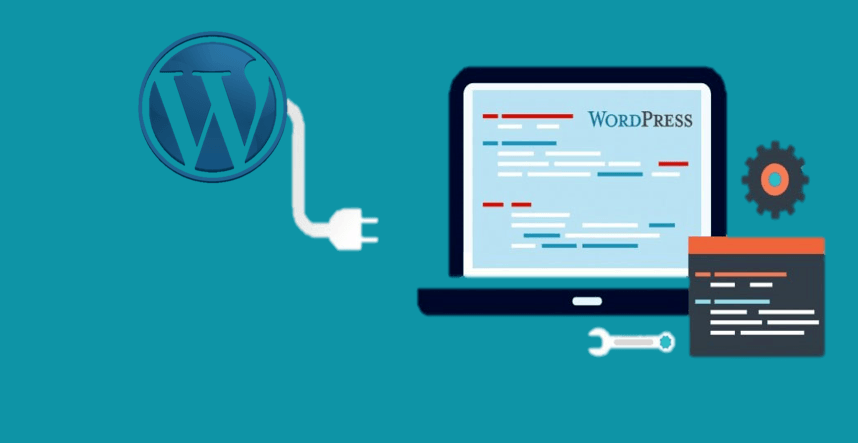The Future of WordPress Development: Embracing Innovation and Flexibility

WordPress, the world’s most popular content management system (CMS), continues to evolve, shaping the web development landscape. As we look towards the future, WordPress development is moving in several exciting directions, each of which holds the promise of greater flexibility, improved performance, and enhanced user experiences. This article explores the trends and innovations that are driving the next wave of WordPress development.
1. Full Site Editing (FSE) and Block-Based Themes
One of the most significant shifts in WordPress development is the transition to Full Site Editing (FSE). This feature, introduced with WordPress 5.8, is part of the broader Gutenberg project, which aims to make WordPress more user-friendly by replacing the traditional editor with a block-based approach. FSE allows developers and users to design entire websites using blocks, providing unprecedented control over every aspect of a site's layout.
Block-based themes are at the core of this transformation. These themes are built entirely with blocks, allowing users to customize headers, footers, and other template parts without touching a line of code. As FSE matures, we can expect a surge in block-based themes that offer greater flexibility and creative freedom. Developers will need to adapt to this new paradigm, focusing on creating reusable block components and ensuring compatibility with the evolving FSE ecosystem.
2. Headless WordPress and Decoupled Architectures
As digital experiences become more complex, there is a growing trend towards headless WordPress and decoupled architectures. In a headless setup, WordPress serves as a back-end content management system, while the front end is built using modern JavaScript frameworks like React, Vue.js, or Angular. This approach allows developers to create highly dynamic and interactive user interfaces while still leveraging WordPress's powerful content management capabilities.
The rise of headless WordPress is driven by the need for faster, more responsive websites that can deliver content across multiple channels, including web, mobile apps, and IoT devices. As more businesses adopt this approach, developers must become proficient in working with REST APIs and GraphQL, as well as understanding the nuances of different front-end frameworks.
3. Performance Optimization and Core Web Vitals
Website performance has always been a critical factor in user experience and search engine rankings. However, with Google's introduction of Core Web Vitals as a ranking signal, performance optimization has taken center stage in WordPress development. Core Web Vitals focus on three key aspects: loading performance (Largest Contentful Paint), interactivity (First Input Delay), and visual stability (Cumulative Layout Shift).
To meet these new standards, developers must prioritize optimizing their themes and plugins for speed. This includes minimizing render-blocking resources, optimizing images and media files, and leveraging modern technologies like lazy loading and server-side caching. Additionally, tools like Google PageSpeed Insights and Lighthouse have become essential for developers to ensure their sites meet the required performance benchmarks.
4. Security Enhancements and Best Practices
As WordPress powers over 40% of the web, it remains a prime target for hackers. Security is a top priority for the WordPress community, and developers must stay vigilant in following best practices to protect their sites. This includes regular updates to WordPress core, themes, and plugins, as well as implementing strong password policies, two-factor authentication, and secure hosting environments.
The future of WordPress security will likely see increased adoption of automated tools and services that help identify and fix vulnerabilities before they can be exploited. Developers should also be prepared to integrate advanced security features, such as Content Security Policies (CSPs), Web Application Firewalls (WAFs), and encrypted connections (HTTPS), into their development workflows.
5. Artificial Intelligence and Machine Learning Integration
Artificial Intelligence (AI) and Machine Learning (ML) are transforming many industries, and WordPress development is no exception. From AI-driven content recommendations to automated SEO optimization, these technologies are beginning to make their mark on WordPress.
Plugins like Jetpack's AI Assistant and WordLift are already leveraging AI to enhance content creation and optimization. In the future, we can expect to see even more sophisticated AI-driven tools that help with everything from design customization to personalized user experiences. Developers should stay informed about these advancements and explore ways to integrate AI and ML into their WordPress projects to stay ahead of the curve.
6. Enhanced Developer Tools and Workflow Automation
As WordPress development becomes more complex, there is a growing demand for enhanced developer tools and workflow automation. Tools like Docker, WP-CLI, and version control systems (e.g., Git) are becoming standard in the WordPress development process, allowing developers to streamline their workflows and collaborate more effectively.
The future will likely see the rise of more advanced development environments, such as local development tools with integrated testing and deployment pipelines. These tools will enable developers to build, test, and deploy WordPress sites more efficiently, reducing the time to market and ensuring higher code quality.
7. Sustainability and Green Web Development
With the increasing awareness of climate change and environmental impact, sustainability is becoming a critical consideration in web development. WordPress developers are beginning to explore ways to make their websites more energy-efficient, from optimizing server resources to minimizing data transfer and reducing carbon footprints.
Green web development practices, such as using energy-efficient hosting providers and optimizing code for performance, will become more prevalent in the coming years. Developers who prioritize sustainability in their projects will not only contribute to a healthier planet but also appeal to environmentally-conscious clients and users.
- Web Development
- Art
- Causes
- Crafts
- Dance
- Drinks
- Film
- Fitness
- Food
- Jocuri
- Gardening
- Health
- Home
- Literature
- Music
- Networking
- Alte
- Party
- Religion
- Shopping
- Sports
- Theater
- Wellness




